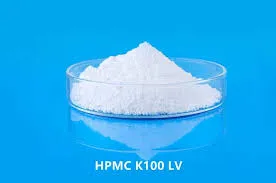
ጥቅም . 11, 2024 06:50 Back to list
applications of redispersible polymer powder
Applications of Redispersible Polymer Powder Enhancing Performance in Various Industries
Redispersible polymer powder (RDP) has emerged as a vital ingredient in a multitude of applications across different industries, especially in construction and building materials, paints and coatings, adhesives, and other composite materials. As a key additive, RDP significantly improves the performance and quality of products, making them more versatile and efficient.
What is Redispersible Polymer Powder?
Redispersible polymer powders are water-soluble polymers that, upon mixing with water, can form a stable, viscoelastic film. Typically derived from emulsion polymers, these powders exhibit excellent adhesive properties, flexibility, and resistance to water. The benefits of using RDP include improved tensile strength, resistance to cracking, and enhanced durability of the final product.
Applications in Construction
In the construction industry, RDP plays a crucial role in enhancing the properties of cement-based materials such as tile adhesives, facade systems, and repair mortars. When added to these mixtures, RDP improves their workability, adhesion, and flexibility. It allows for the creation of thin-layer applications in tile adhesives, which is advantageous for quick installations and reduced material usage.
Moreover, RDP enhances the resistance of mortar and concrete to weathering and moisture. This is particularly important for outdoor applications where exposure to rain and fluctuating temperatures can compromise the integrity of the material. The incorporation of RDP in external facade systems ensures a longer service life and reduced maintenance costs.
Innovations in Paints and Coatings
The paints and coatings industry also benefits significantly from the use of RDP. By adding these polymer powders to formulations, manufacturers can improve the rheological properties, which contributes to better spreadability and stability during application. RDP enhances the adhesion of paint to various substrates, including metal, wood, and concrete surfaces, ensuring a durable finish that can withstand environmental challenges.
applications of redispersible polymer powder

Additionally, RDP imparts flexibility and impact resistance to coatings, reducing the risk of cracking and peeling
. This flexibility is especially valuable in applications where buildings and structures expand and contract due to temperature variations, making RDP a crucial component in high-performance paints and coatings.Adhesives and Sealants
In the realm of adhesives and sealants, RDP serves as an essential additive that increases bonding strength and performance. The use of RDP in formulations allows for improved water resistance and adhesion to a variety of substrates. This is particularly important in construction adhesives, where strong and lasting bonds are necessary for structural integrity.
RDP also enhances the open time and working time of adhesives, ensuring that users have sufficient time to apply and adjust the materials before they set. The reduction of slip and sag during the application process is another advantage, contributing to a more user-friendly experience.
Composite Materials
Beyond construction, redispersible polymer powders are finding applications in the production of composite materials. For instance, in the automotive and aerospace industries, RDP can be used to improve the performance of composite resins and thermoplastics. By enhancing properties such as tensile strength, impact resistance, and thermal stability, RDP contributes to the development of lightweight yet robust composite structures.
Moreover, in the textile industry, RDP is utilized in coating formulations that provide fabrics with water-resistant and flexible finishes. This has significant implications for outdoor apparel, upholstery, and other textile applications that require performance in various environments.
Conclusion
The versatility and performance-enhancing qualities of redispersible polymer powder make it an invaluable asset across various industries. From construction and paints to adhesives and composite materials, RDP contributes to the development of high-performance products that meet the demands of modern applications. As industries continue to evolve and seek materials with superior properties, the role of redispersible polymer powder will undoubtedly expand, fostering innovations that drive efficiency, sustainability, and performance in diverse applications.
-
Unlocking the Benefits of HPMC Products: A Gateway to Versatile Applications
NewsAug.07,2025
-
Unleashing the Potential of HPMC Ashland: A Comprehensive Look
NewsAug.07,2025
-
Tile Bonding Cellulose: The Key to Superior Adhesion and Durability
NewsAug.07,2025
-
Hydroxypropyl Methylcellulose Powder: The Versatile Component in Modern Pharmaceuticals
NewsAug.07,2025
-
Hydroxyethyl Cellulose: The Versatile Solution for Various Industries
NewsAug.07,2025
-
Hydroxyethyl Cellulose (HEC): The Versatile Polymer for Various Applications
NewsAug.07,2025







